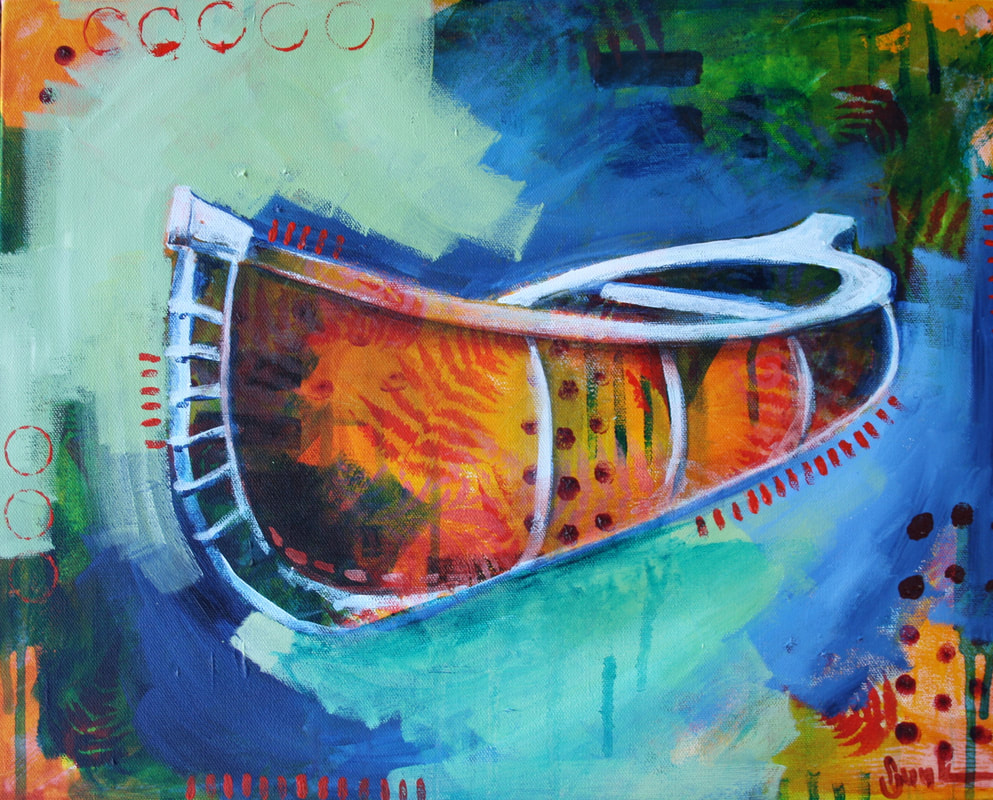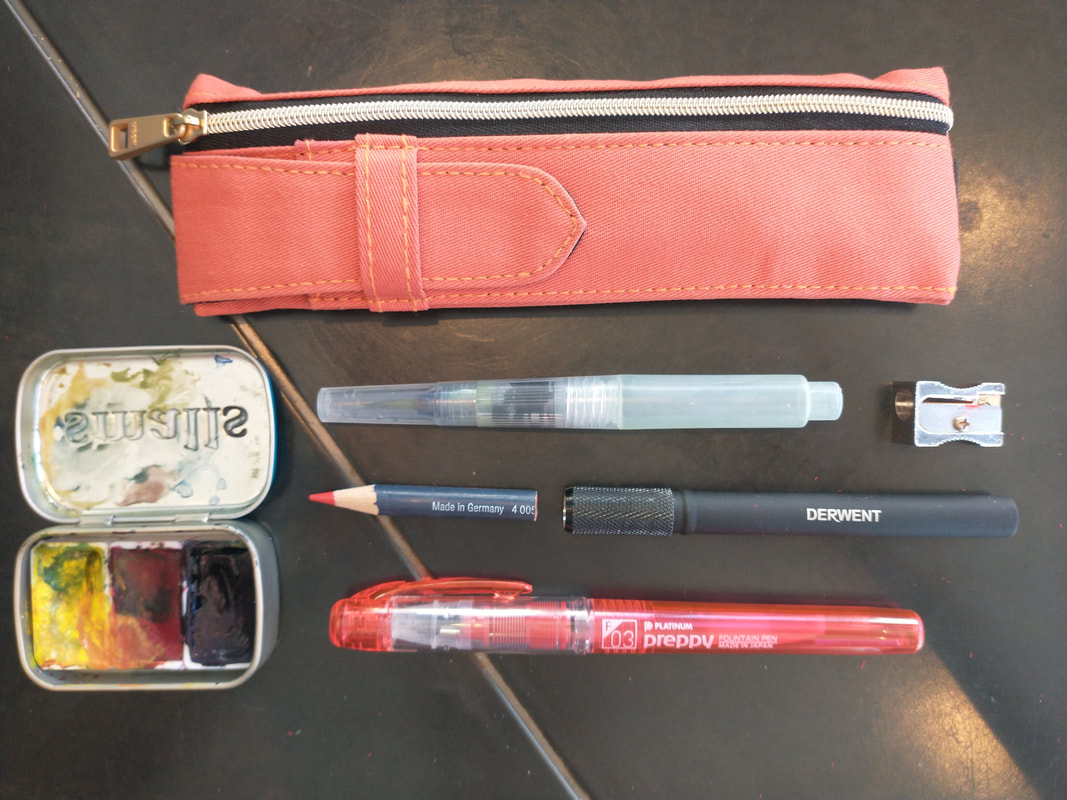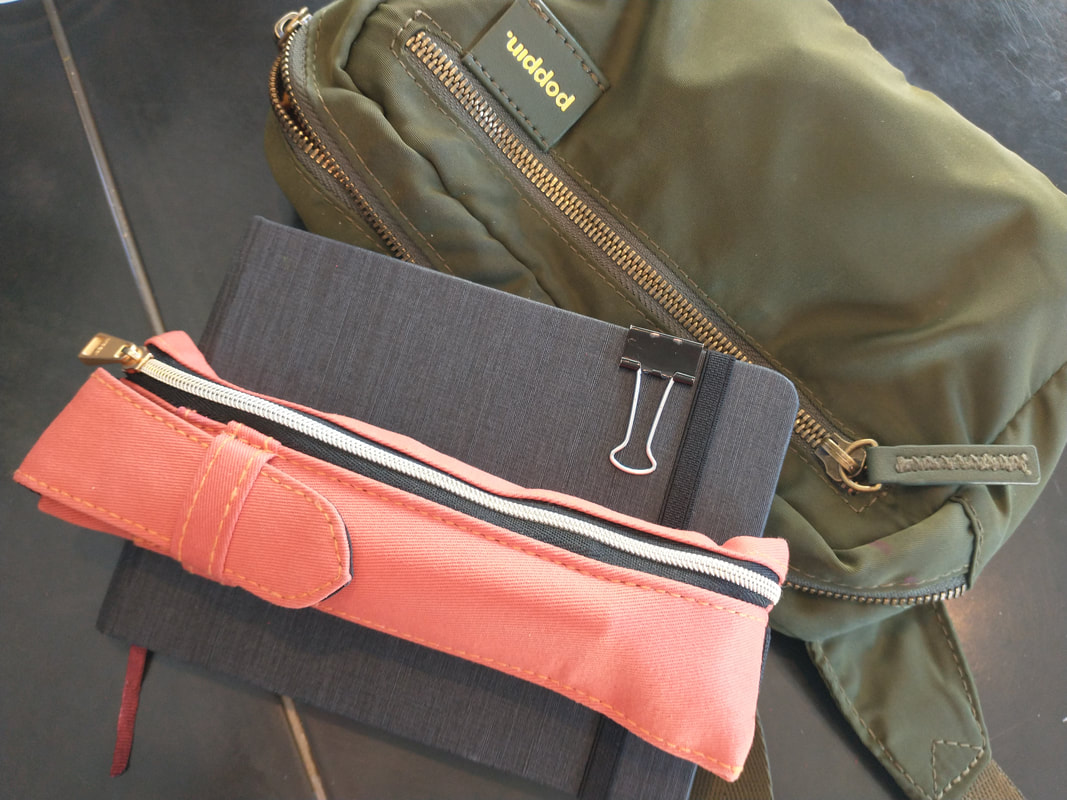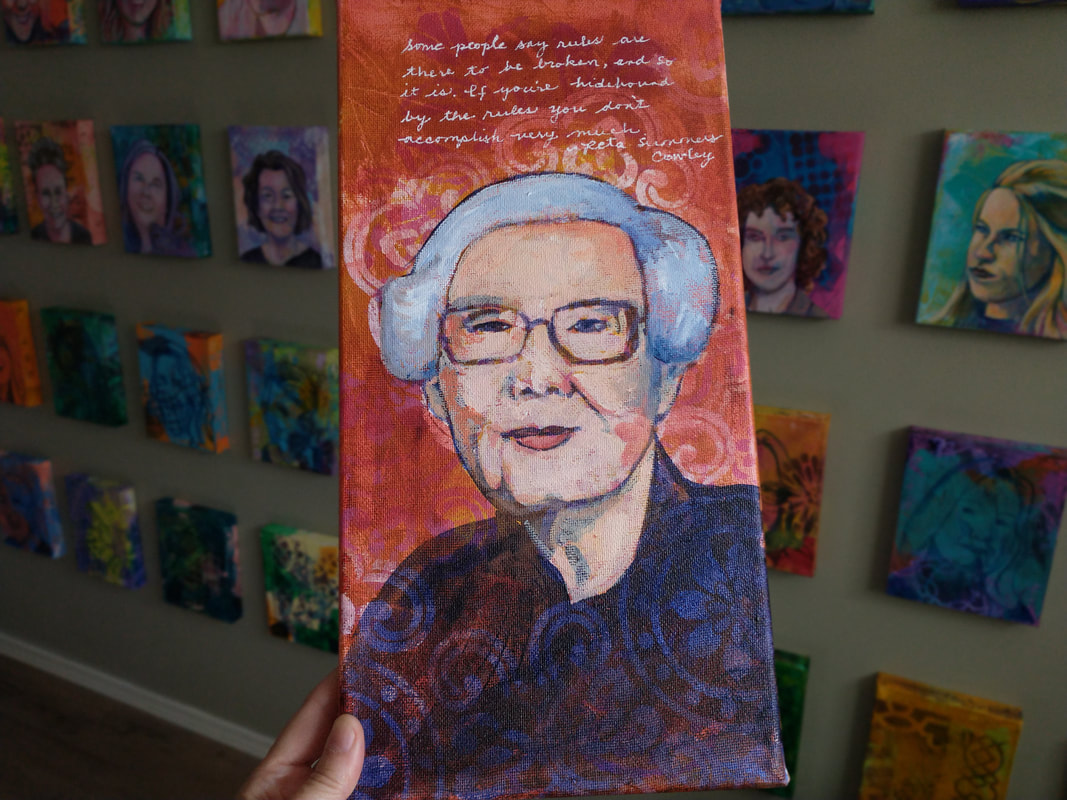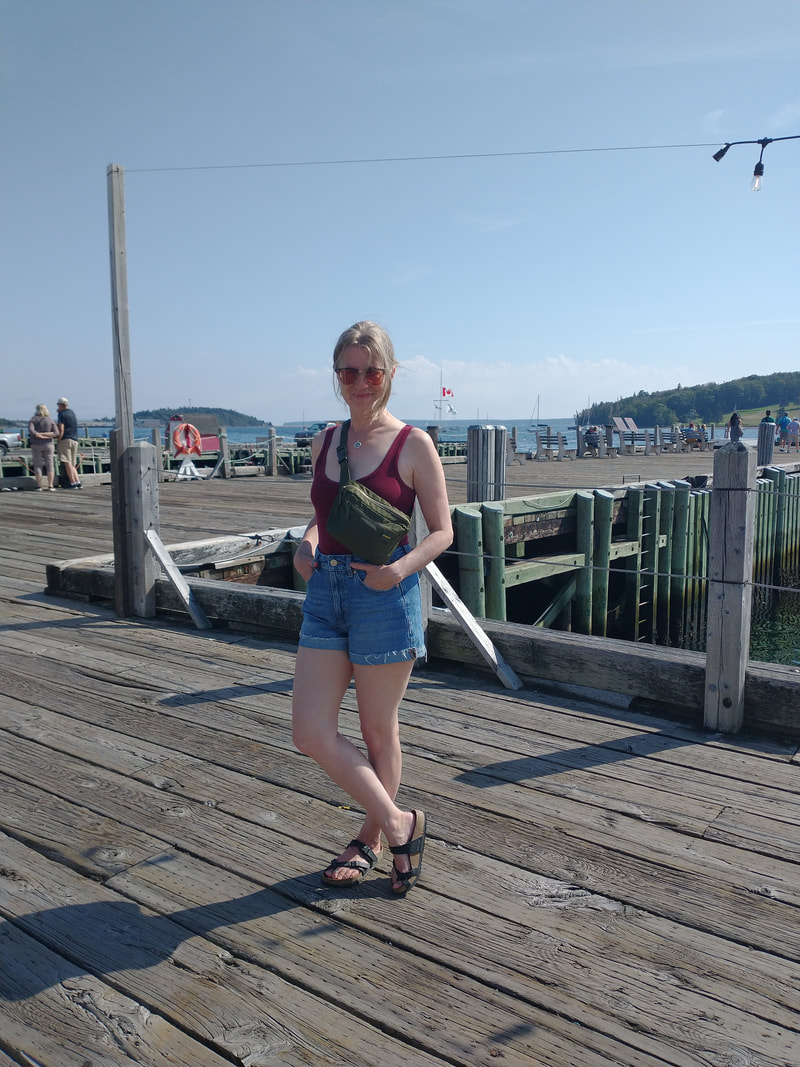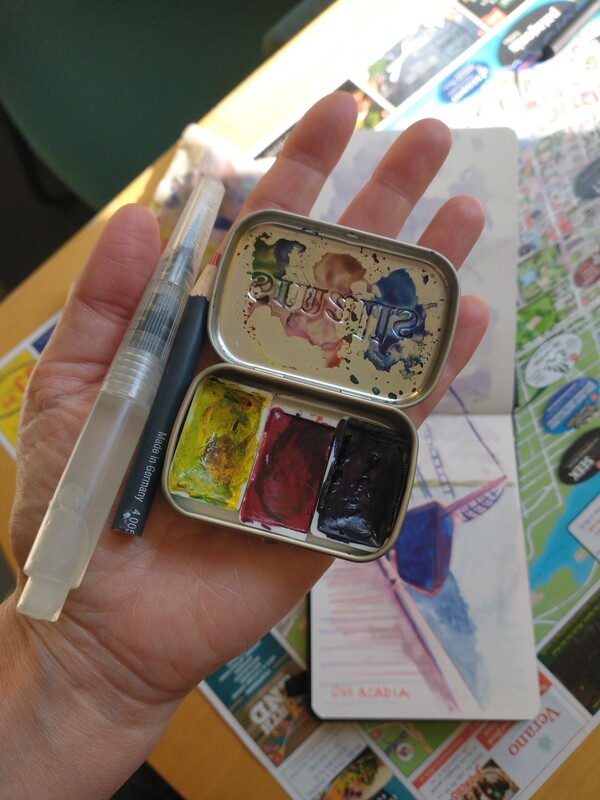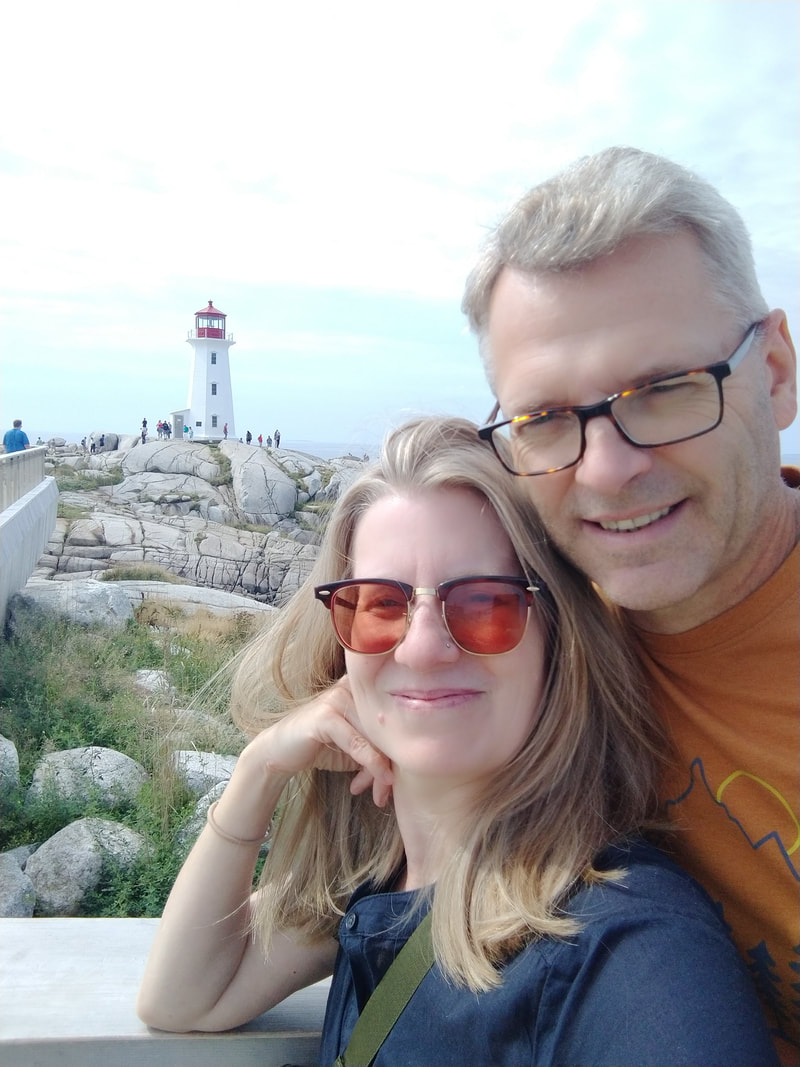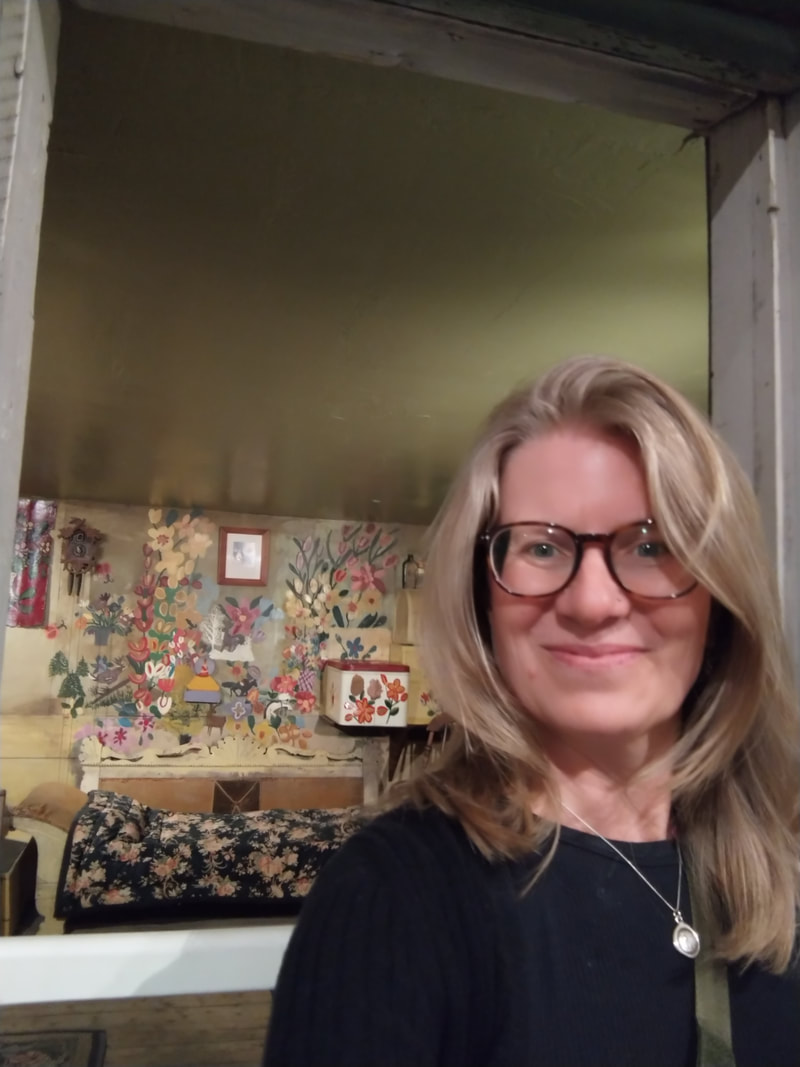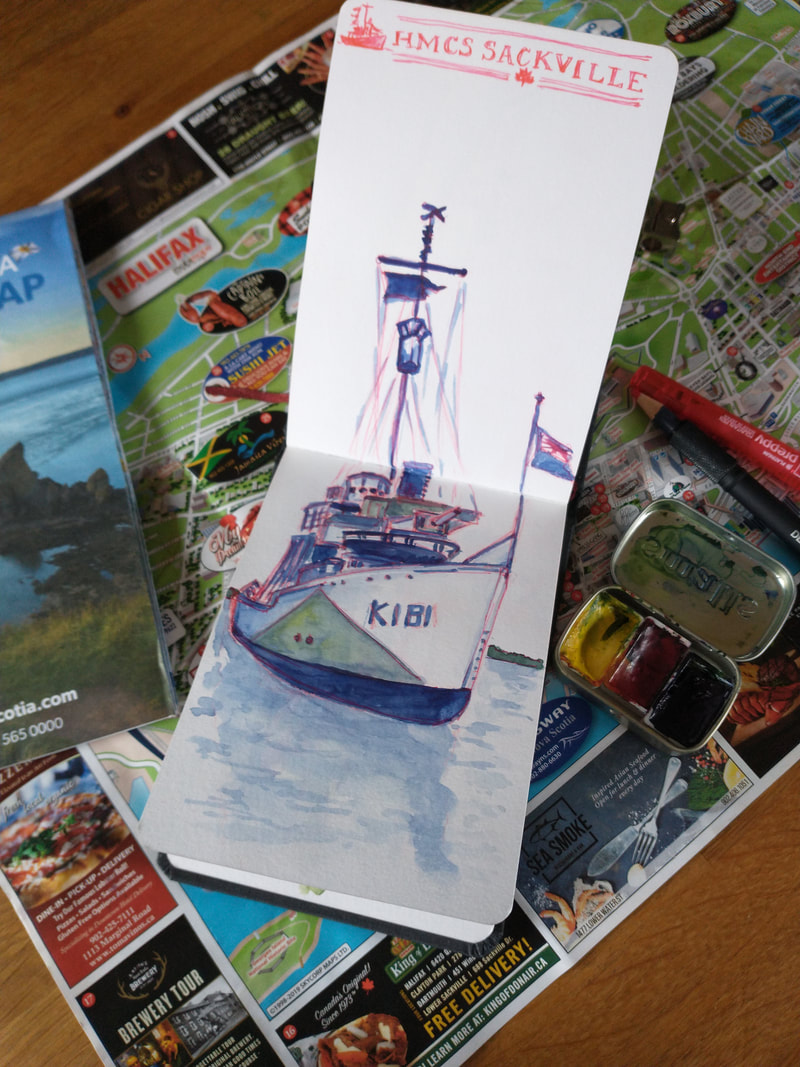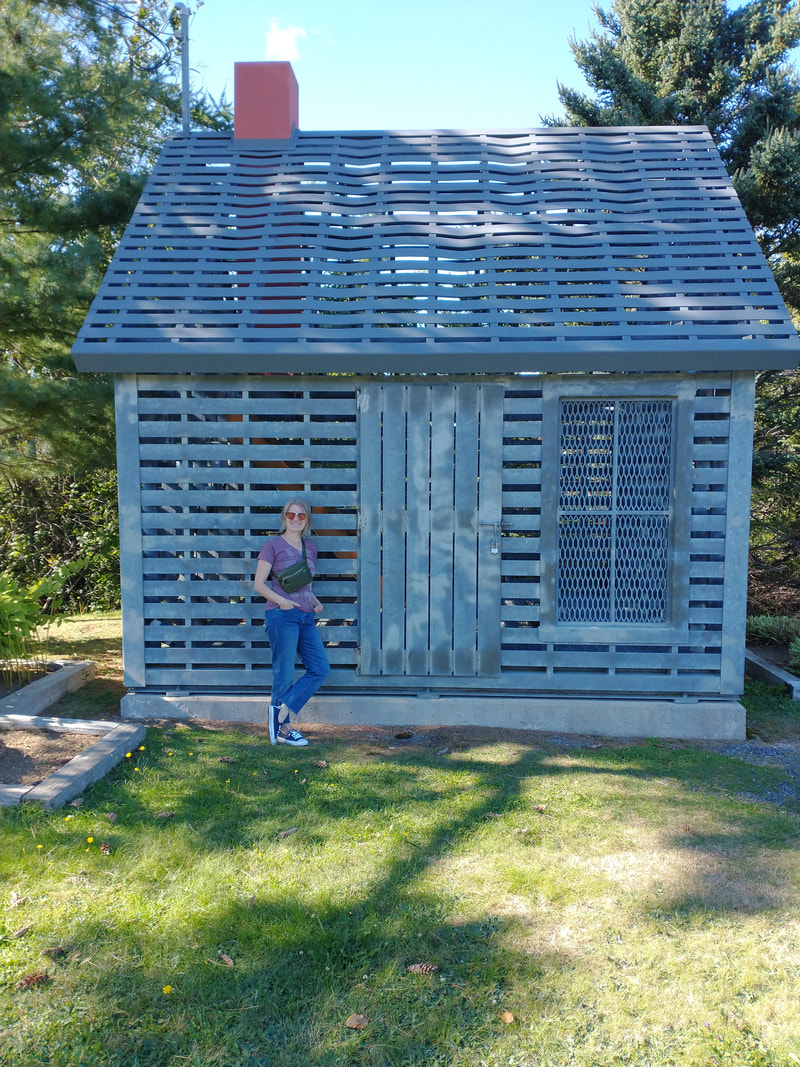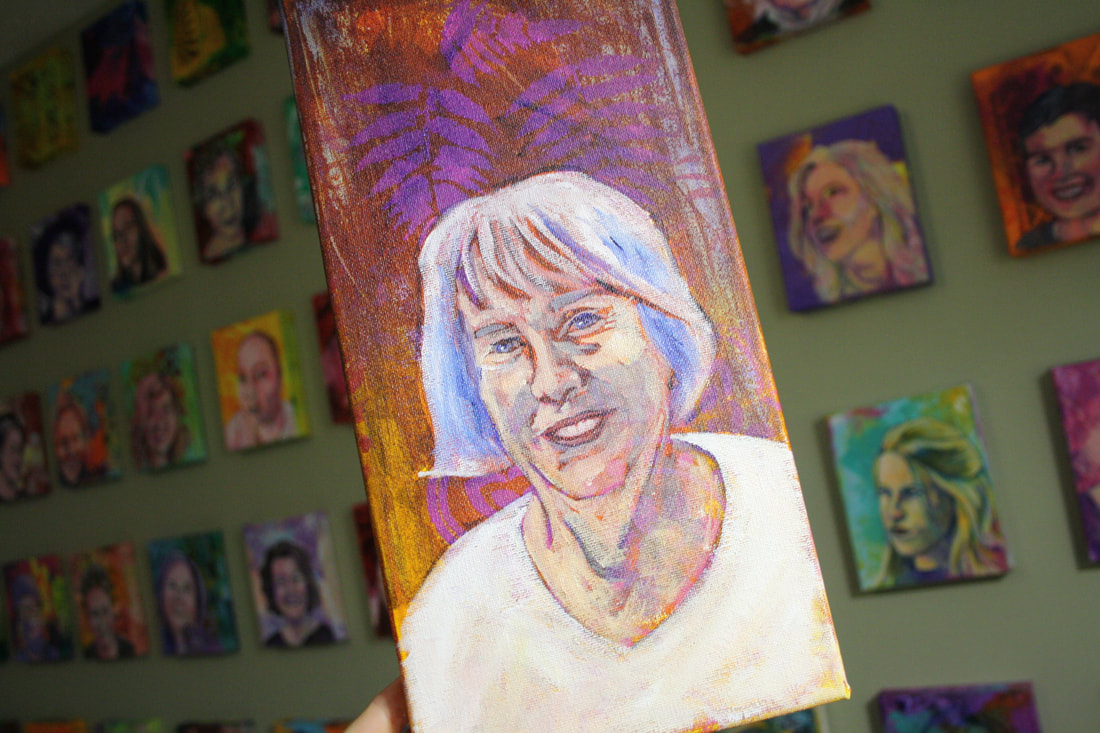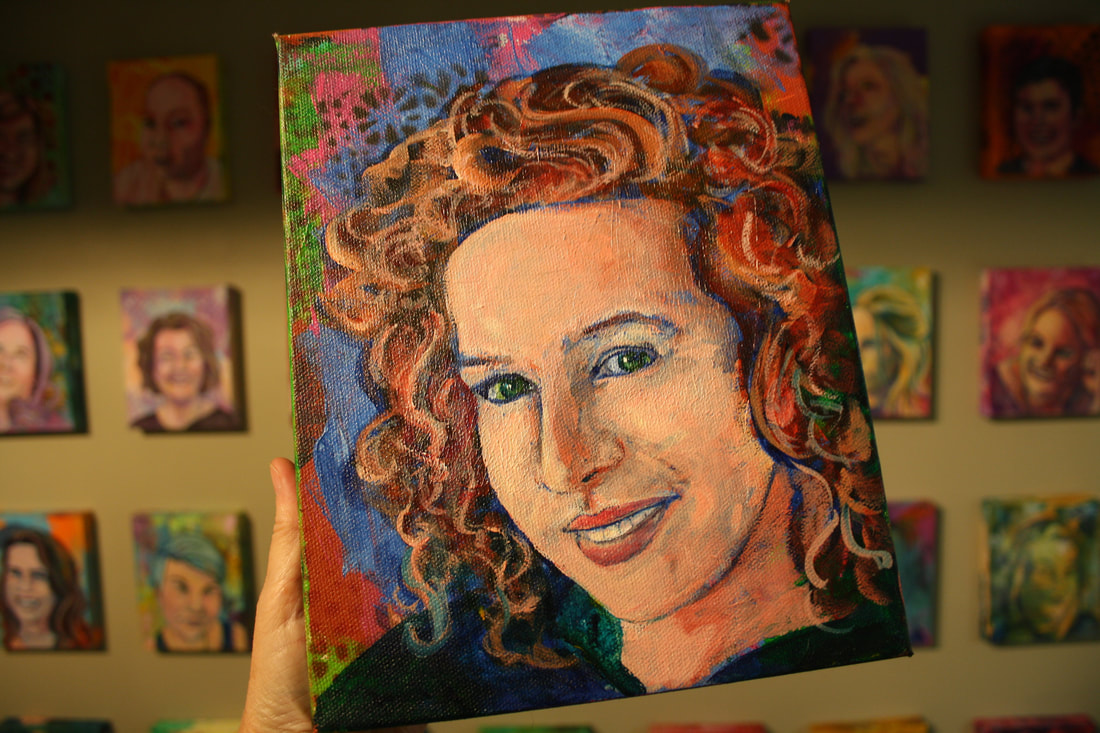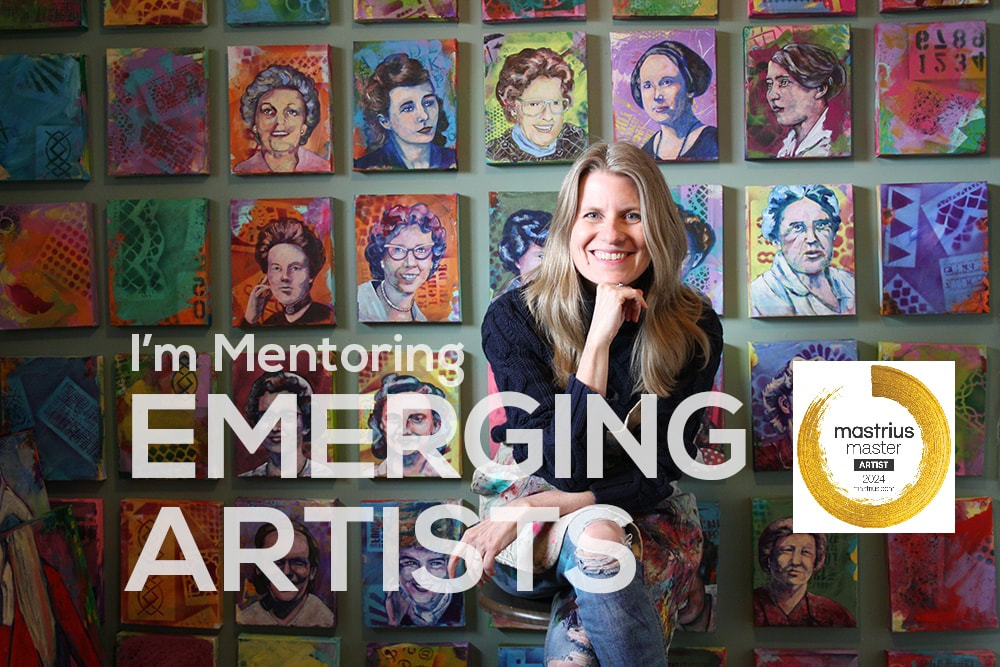|
"As more people have appeared to lose the light within their soul, it has reminded me that it’s important to be a trailblazer. Standing in my power and liberating women to create their own story." - Vicki Latter
MASTRIUS: We were thrilled to donate a portion of proceeds to support the work of FOR THE SPARROWS (FTS), a Calgary based social enterprise which empowers survivors of sexual exploitation in the Alberta area.
(This was my contribution...a memory of my youth in northern Manitoba.) I've been asked what I'm using whenever I'm sketching out and about so I thought I'd share a few things that work well for me.
It's all small and accessible, which is what I need to keep me motivated. I've always wanted art to be fun so this has been a perfect addition to my daily life. "I’m a mom of twin boys, an Occupational Therapist that supports people with chronic/progressive neurological conditions, an artist and I volunteer with Cystic Fibrosis Canada in a leadership role as the chair of the Adult CF Advisory Committee.
The older I get, the more compelled I feel to share my story. Not only because I feel Cystic Fibrosis deserves more awareness, but because we all experience struggles and setbacks in our lives. Perhaps by being open about our vulnerabilities, we can all relate to one another a little better and further perpetuate kindness, compassion, and empathy towards each other. I’m a proud empath and I strongly believe in the power of choosing kindness, choosing compassion and choosing to understand that there is more to everybody's story than is outwardly visible. Because of my Cystic Fibrosis (and bonus insulin-dependent diabetes and connective tissue disease) I have some fairly complex health needs and an onerous daily medical routine that takes up a bit over 2 hours per day, just to try to slow down the rate of lung function decline and keep my chronic lung infections at bay to prevent the next hospitalization. I’m insanely grateful for science and outstanding medical care, which I’ve been lucky enough to have benefitted from (and beyond-grateful to have recently been able to access ground-breaking, life-changing, identity-shifting medications… although it’s wild to think I now cost over $1,000 in medications per day to keep alive and functional…). Beyond the expensive and lengthy medical routine, the chronic coughing, the dozens of pills per day, the insulin needles, the grossly visible permanent IV access, the necessarily-shorter-accommodated-work-days, there's the other less-quantifiable costs too. There’s worry over the impact of my disease on my ever-growing boys and the questions they are starting to ask, particularly in the midst of a respiratory pandemic where they’ve become acutely aware that germs they bring home from school can, in fact, make me sick and could trigger a hospital stay. There's the constant over-analyzing of symptoms and questioning whether a couple of harder days might mean needing to call in for stronger meds. There's worrying about when the next hospital stay will be and what that impact will be to my family and for the sustainability of my career. There's the load that comes with acknowledging you have limitations, but also making sure to still do the things that are meaningful, even if it means deliberately overdoing it from time to time. There's balancing that fine line of staying grounded in the sometimes-hard realities that come with this disease, but keeping it hopeful, yet also not being toxically positive (because that is not helpful either). There's the constant heaviness that goes along with being friends with others in the CF community, having it hit far too close to home when friends lose lung function, need to get listed for transplant, lose careers, need to give up hopes of having their own family, or die way way way too young. This disease can be bullshit and it somehow has a way of weaving resilience, kindness, and fierce strength throughout the people it impacts, which makes the losses even more palpable and unfair. Despite the struggles, CF has also had a positive influence on my life. Above all, I have been given the gift of perspective. As I learn to gracefully accept the challenges thrown at me, I have a greater appreciation for the good days and the good moments within the harder days. I recognize how fortunate I am for incredible friends and family that have stepped up to support me without my asking. I am constantly in awe of how much love flows around me. I have a truly beautiful life and am incredibly grateful for it." - Megan Parker Since I've spent of this summer/autumn travelling and taking along a sketchbook, I wanted to share some of the things that surprised me:
1. Finding the time to sketch/paint was actually very easy, but I had to recognize that taking photos as I was walking about was the best way for me to document everything that caught my attention so that I could spend time drawing or painting whenever we stopped for meals or refreshments. 2. I always felt that I wasn't very good with watercolours, drawing architechture, painting skies and water, or even sketching food but I found that taking the time to pay attention to the shapes made it easy and fun, even if it didn't always work out. 3. Simplifying my tools to a small primary palette (altoids tin with red, yellow & blue), a waterbrush, a pencil crayon, a fountain pen and a small watercolour or mixed media sketchbook (about 3x5) actually made me more creative as I had to really think through my process & I didn't end up spending time on what I was going to use because my choices were limited. 4. I am loving the small sketchbooks as mementos of my trips as I spent time really paying attention to my surroundings and I also didn't feel like purchasing so much to capture the moment which was limited in any case as I had only carry on luggage. 5. I've also been pleasantly surprised at how much yellow I've used as I typically lean towards reds but it was the colour I used least, totally opposite of my usual. What is very interesting in this is that I have finally figured out how I want my sketchbook layouts to look. I experimented with writing, creating simpler imagery, filling one side and then both sides of the open sketchbooks and am so happy to feel like I'm finally in my comfort zone. It keeps me coming back to my sketchbook, which is the most important thing. Even though I may have liked to see other artists sketchbooks that were created in a certain way, I had to take the time to figure out what worked best for me. Some people say rules are there to be broken, and so it is. If you're hidebound by the rules, you don't accomplish very much. From her early 20s and on into her 40s, Reta Cowley was absorbing the advice, influence, and inspiration of several generations of great western Canadian painters. Beginning with study with Augustus Kenderdine at Saskatchewan’s Emma Lake summer school in the 1930s, she travelled to the Banff School of Fine Arts in the 1940s to meet and study with the watercolourist Walter J. Phillips, moving on to classes with structuralist painter Eli Bornstein at the University of Saskatchewan. At every stop, her own work evolved, until the late 1960s, when it reached a fine balance of light, almost abstract watercolour, the result of decades of study and practice.
Born Reta Summers in Moose Jaw and growing up in the Yorkton area in Saskatchewan, Cowley graduated from Normal School and began teaching in rural public schools (she would teach off and on throughout most of her life). An avid amateur painter, she was first encouraged by Kenderdine at Emma Lake, and would return to that retreat through the early 1930s, always centring her work on the light and landscape of the prairies. Cowley would spend another four summers in Banff in the early 1940s under the influence of Phillips, a fine watercolourist who had a similar affinity for the natural world and plein air painting. Her style maturing, Cowley began night classes with Bornstein, absorbing his notes on colour, form, and structure. Her mid-century work began to take on stronger subjects, populated by people and prairie buildings. A few years later, after graduating with a BA from the University of Saskatchewan and taking on her own, unencumbered identity as a painter, Cowley’s style evolved into an almost abstract form. She was also showing her work by then, in more then 20 solo shows from the 1950s forward. Robert Christie at Art Placement in Saskatoon, which represents Cowley’s estate, notes that Cowley’s later habits as a painter revealed much about her process. She would almost exclusively paint from life, returning often to favourite landscapes, most often in the summer (it was difficult to sit outside and paint in the Saskatchewan winter). “A fascinating consequence to Reta’s repetitive painting practice is that when we view a large number of her watercolours from the 1970’s and through the 1980’s, we can see the natural evolutionary changes that the passing of the seasons and the course of time brings to a specific site,” Christie wrote in a 2009 catalogue. “Colours are altered from spring to fall and the density of foliage changes. We can even witness the development of trees and shrubs as they grow to maturity and then decline and die off as the years progressed. In the hands of a lesser painter, the oft-visited subject may have become somewhat clone-like but Reta seemed to thrive with the comfort that comes from familiarity and each new work was as fresh as the previous.” This painting, Untitled (Cows in Field) from 1971, is representative of the work Cowley did throughout that decade — small incremental movements and changes between light-handed watercolours. Christie writes that by this mature period, beginning in the late 1960s, Cowley’s subjects had shifted from architectural elements to pure landscape. “She no longer needed the obvious structural shapes of buildings to guide her. Instead she found more freedom, and perhaps even more substance, in what might appear to the untrained eye as somewhat standard farm scenery. As her literal subject was reduced, the abstract elements were allowed to emerge.” ~ Jill Sawyer, Galleries West Magazine, "I was born and raised in Guelph, Ontario and now reside in the nearby city of Cambridge. I am fortunate to have the opportunity to be close to numerous trails, parks and best of all campgrounds, where I have a seasonal outdoor studio from Spring through to Fall.
Studying at NSCAD in Halifax, Nova Scotia and OCAD in Toronto, Ontario pushed my boundaries to explore not only painting but drawing, silk screening, sculpture and photography. While studying the arts in Toronto, I expanded my floral knowledge at Humber College, receiving a Floral Design diploma. A true artist at heart, my passion for creativity, nature and florals began from a young age while working at my family's Garden Centre. That passion inspired me to open my own floral shop, specializing in wedding florals and seasonal planters. I use this passion when creating each painting, whether for myself or a commissioned piece. I paint realism using a minimal colour palette while emphasizing and exploring detail and contrast between the lightness and darkness of the shadows and all the tonal variations in between. Florals, botanicals and simply nature provide me with comfort and inspiration. I draw upon the intricacies of a single blossom or the detailed close-up of branches, leaves, and berries from these surroundings." - Leah Olsen-Kent I had an amazing two weeks in Nova Scotia last month and I already want to go back! There was inspiration everywhere and the views, food, art & people were incredible. I packed the smallest kit that I took everywhere...a small altoids tin with three primary colours, a watercolour brush, small red pencil crayon, red fountain pen & a sharpener. It fit so nicely into my shoulder pack.
I visited Maud Lewis' home and Memorial, spent much time in Halifax and then Peggy's Cove, Chester, Lunenburg, Marshalltown, Wolfeville, Digby, Annapolis Royal (the birthplace of Canada).I loved it all. I was able to fill a small 3x5 inch watercolour sketchbook and am still inspired to create paintings in another sketchbook as I have so many photographs to keep me painting. The thing I learned about urban sketching this summer, the thing that works for me, is to take photos while I walk then sketch them out in red pencil crayon ( Faber-Castell - I don't want to erase as it forces me to pay attention to shapes and I love the red), then paint using the primary watercolours (Daniel Smith hansa yellow light, quinacridone rose, indanthrone blue - the colours may vary over time), and, finally outline with red ink (I picked up a Platinum Preppy 0.03 red fountain pen at a bookshop near our inn. When I had a few drawings in my sketchbook then I could paint whenever we had longer stops (in our rental car, parks, cafes, pubs, restaurants & at our inn). It's been a lot of trial & error but I've finally found something that feels easy for me and I cannot wait to paint in my sketchbook every day. I guess my five (vital factors for a good life) have been painting, painting, painting, painting, and painting. Born in Saskatchewan, Canada, Dorothy Knowles, now 94 years old, is a renowned and highly influential landscape artist. Growing up on a farm, Knowles was surrounded by the views of the prairies. Although she never intended on becoming an artist, having instead attended the University of Saskatchewan to study biology, she discovered her passion for painting after graduation while attending a summer course offered by the University.
Switching paths, Knowles continued her education in art, studying under notable artists like Eli Bornstein and Nikola Bjelajac at the University of Saskatchewan. In 1952, she visited the Banff School for a summer course and decided to move and continue her studies in England, where she attended the Goldsmith School of Art in London. Knowles returned to Saskatchewan, partaking in various workshops in Lake Art Camp throughout the 1960s, working under names like Clement Greenberg, Kenneth Noland, Jules Olitski, Lawrence Alloway and Michael Steiner. The influence of Noland and Greenberg can be seen in Knowles’ work, exploring both impasto and fluid techniques in her art. Many have compared her work to that of Monet, with her impressionistic depictions of nature employing light and colour to depict the beauty of Western Canada. Despite travelling all around Europe with her husband, William Perehudoff, in 1952, Knowles remained devoted and inspired by Canadian landscapes and nature. In 1954, Knowles held her first-ever exhibition at the Saskatoon Art Centre. Since then, her art has featured in shows across America and Canada, including the Biennial Exhibition of Canadian Painting at the National Gallery of Canada and the Hirshhorn Museum of the Smithsonian Institution's exhibit “14 Canadians: A Critic's Choice”. In 1983, she displayed her work in galleries across London, Paris, and Brussels, travelling in a group exhibition known as the “Five From Saskatchewan.” Knowles’ keen and talented eye captures the Canadian outdoors in its various states of glory. From flowery fields to fall and winter wonderlands, Knowles's work honours the planet, and in doing so relates to the United Nations Development Goals for Life on Land. The Life On Land initiative aims to “protect, restore and promote sustainable use of terrestrial ecosystems, sustainably manage forests, combat desertification, and halt and reverse land degradation and halt biodiversity loss.” Knowles's work serves as a reminder and, in a way, a love letter to nature, showing people what they are protecting — or what they should protect. Knowles’s paintings can be one’s beginning steps in respecting and observing nature. However, conservation does go beyond appreciation. The globe is facing a biodiversity crisis, and to combat this crisis, Indigenous knowledge and voices must be centred in the movement. Conserving nature is a vital step in reversing the impact of climate change and must become a priority in policy-making, lifestyle habits, and global discussion. With that said, this cannot be done without concentrating on and funding Indigenous leadership. Consumerism convinces us to focus on what is manufactured, and Knowles’s work reminds us of the power and beauty of nature. While we pay respect to Knowles as an artist, let us also remember that action is still required to make a genuine difference. ~ Amy Lloyd, ArtsHelp "Over the past few years, I’ve been trying to constantly find the right balance of juggling a full-time job in Oil & Gas and reconnecting with my passion of painting. The pandemic was also a time where I enjoyed a less demanding schedule of constantly having the days on our family calendar filled to the brim. The pandemic brought about changes from working downtown to working from home, helping my daughter navigate between swings of in-person and online school and my husband being an essential worker and continuing to work out of home each day. I look forward to continuing to figure things out day by day and enjoying a slightly more relaxed pace in life and prioritizing time with family and friends." - Becky McNabb
|
|

